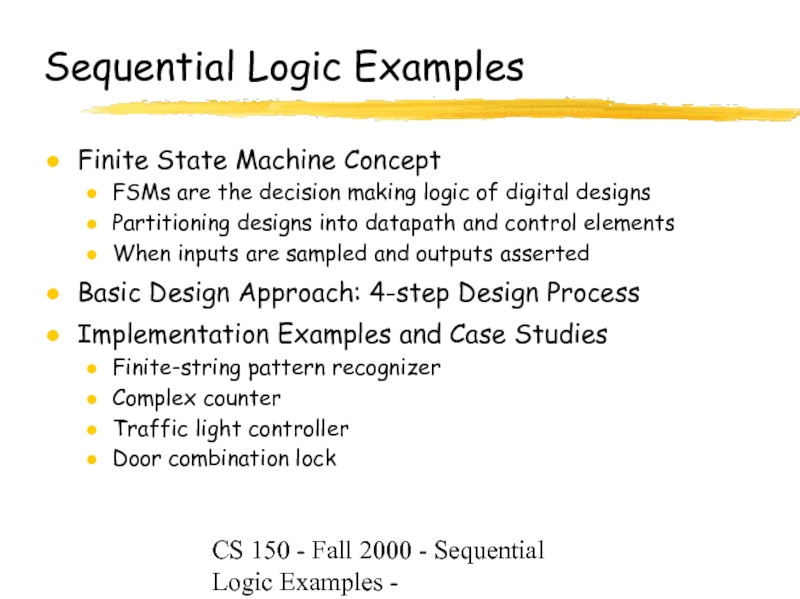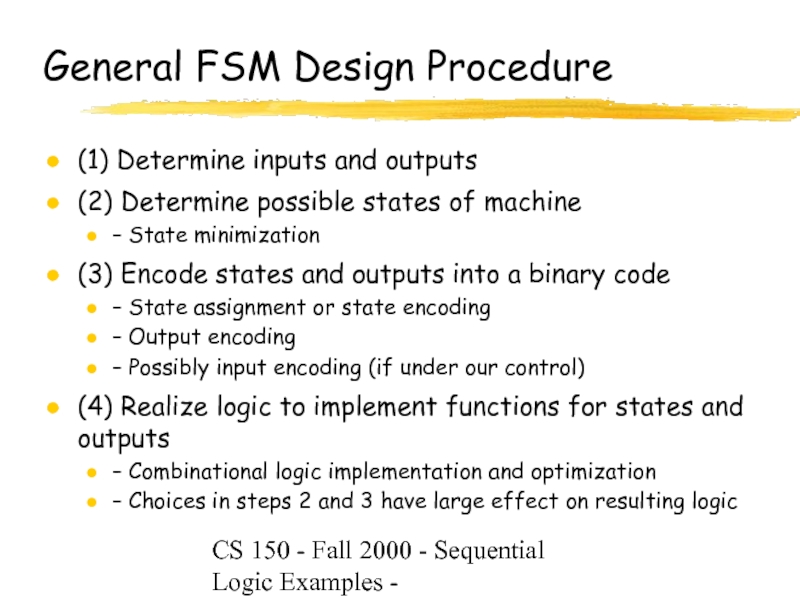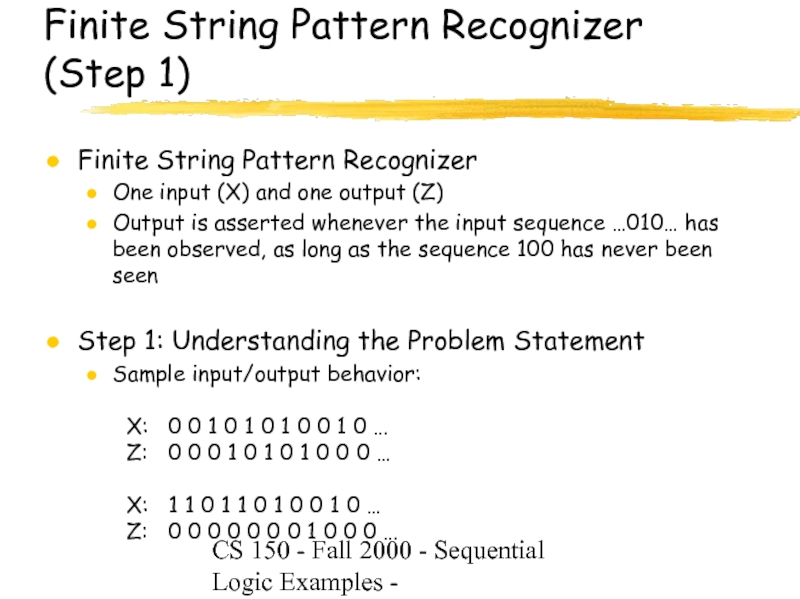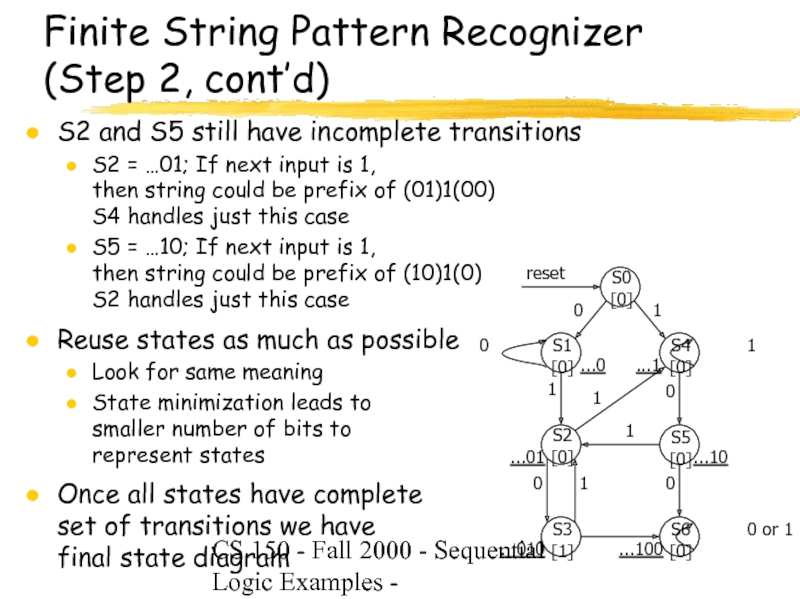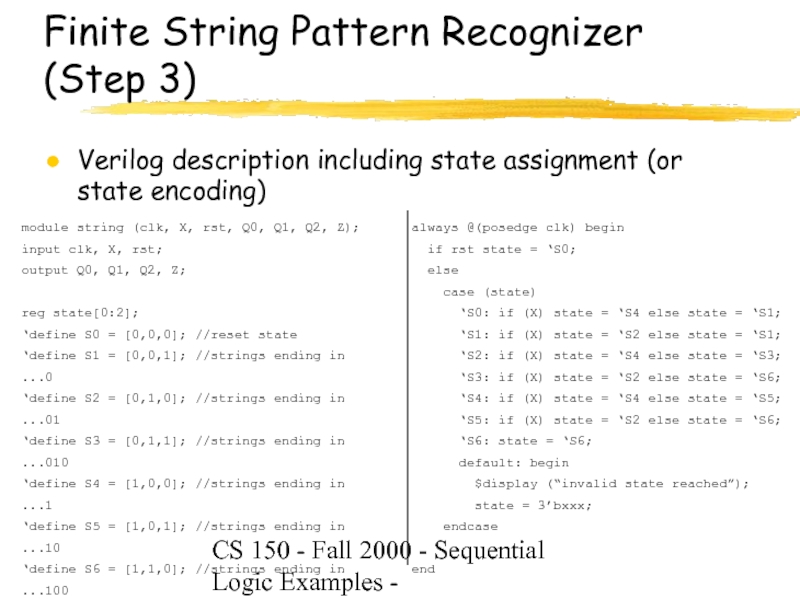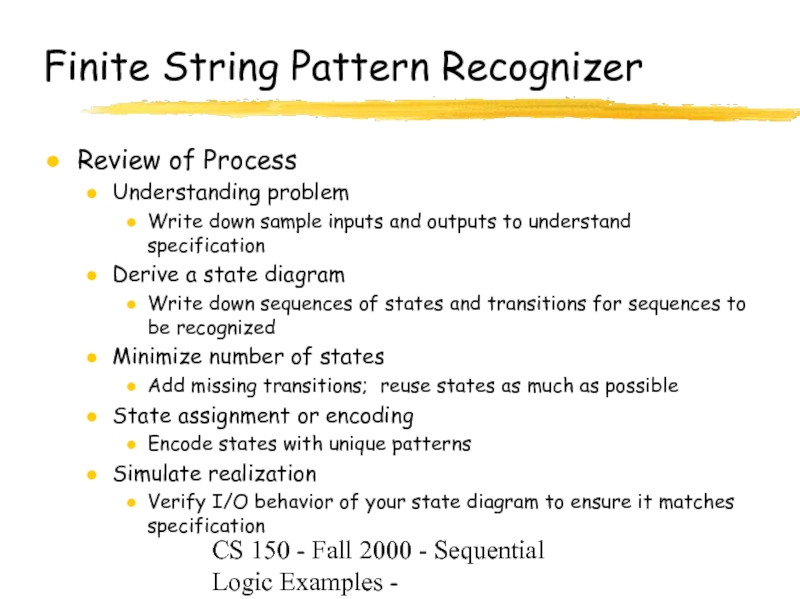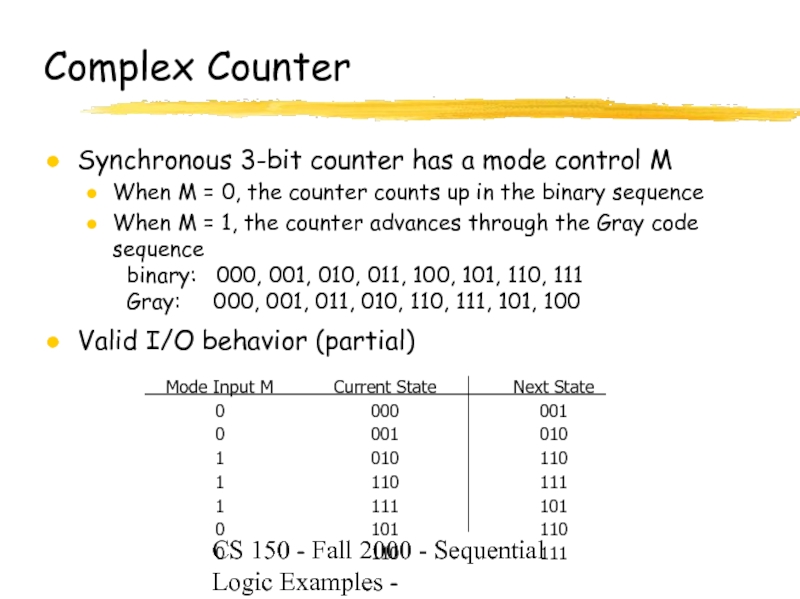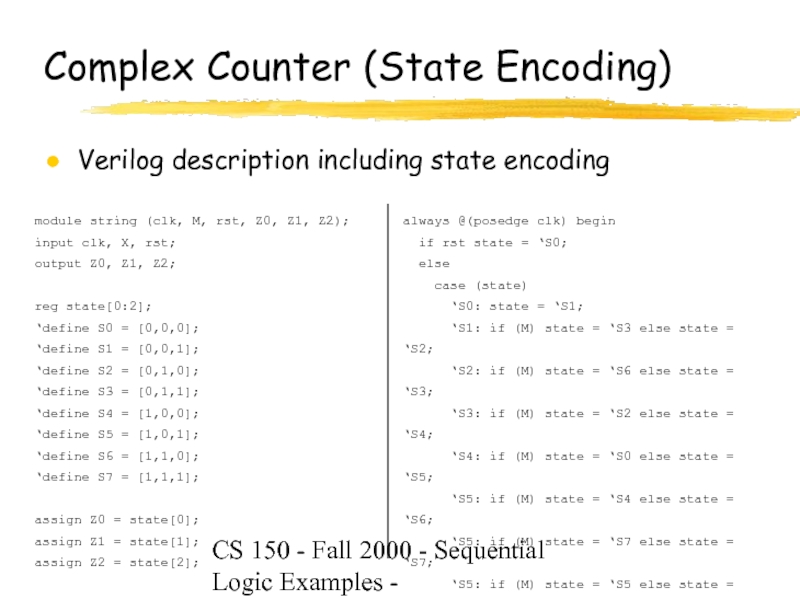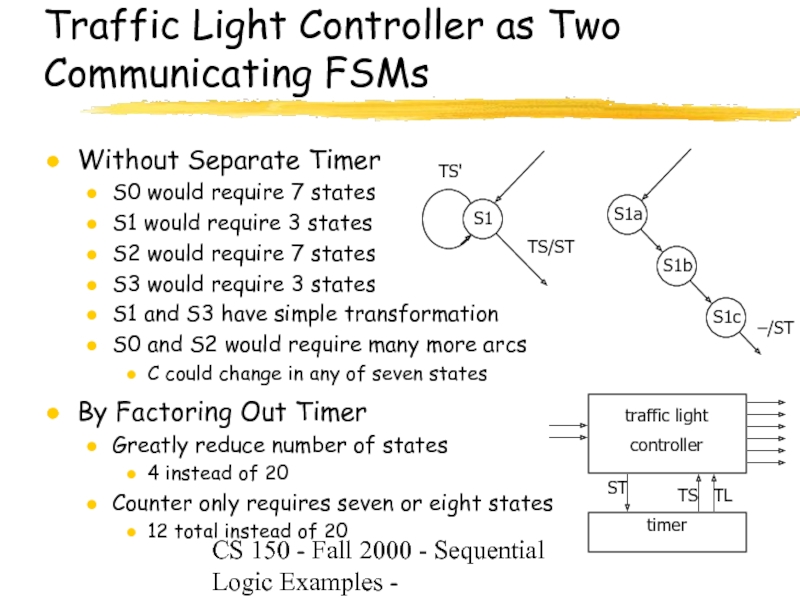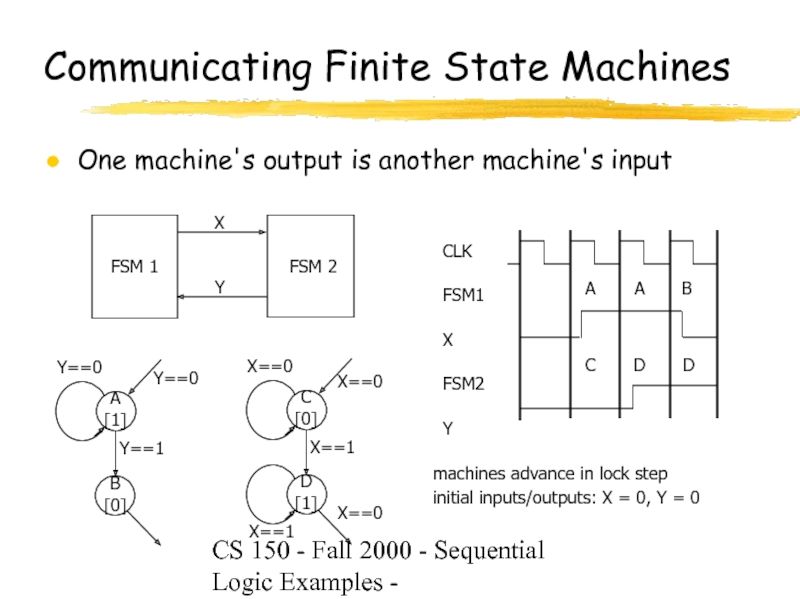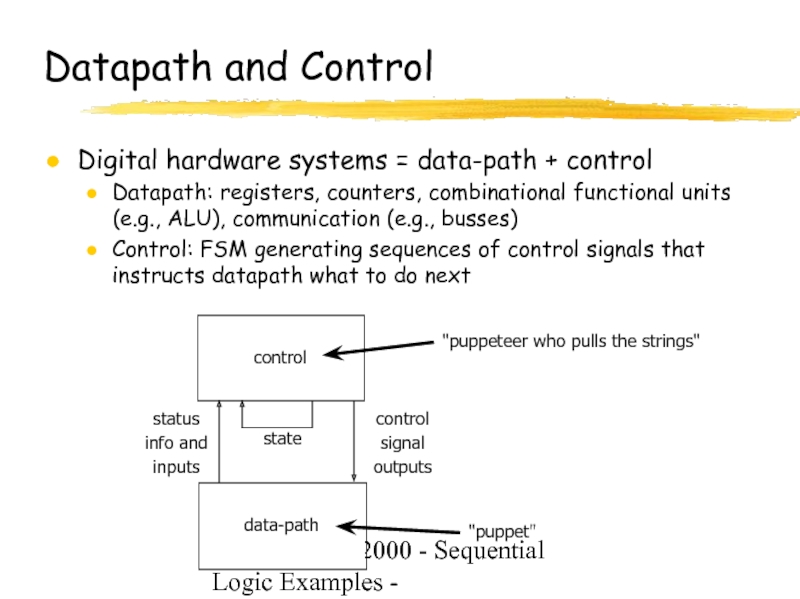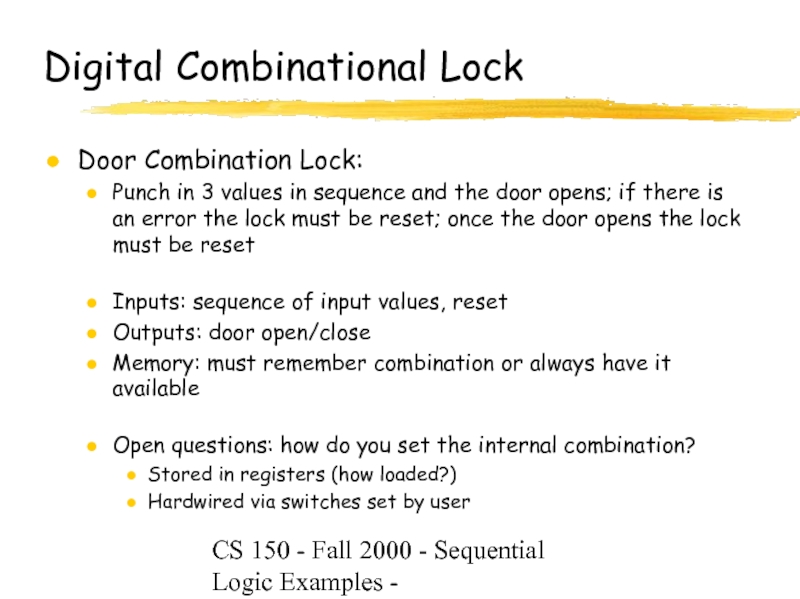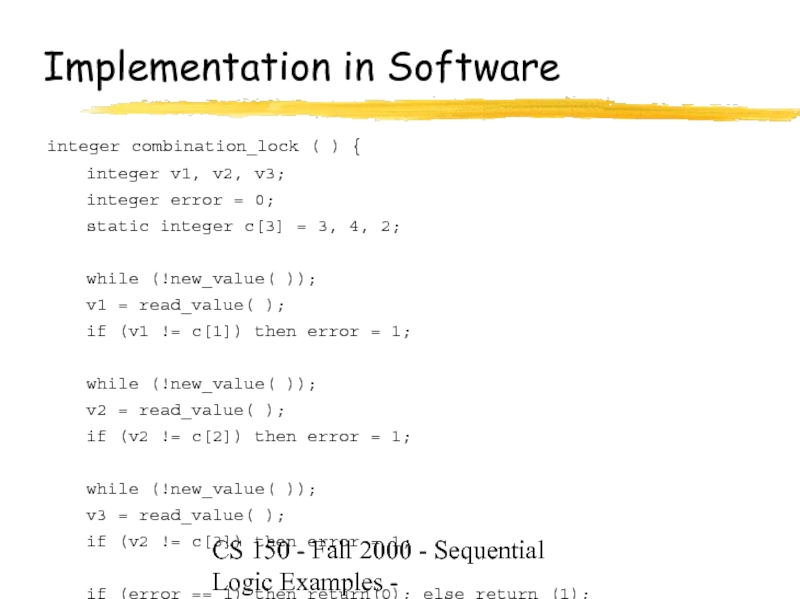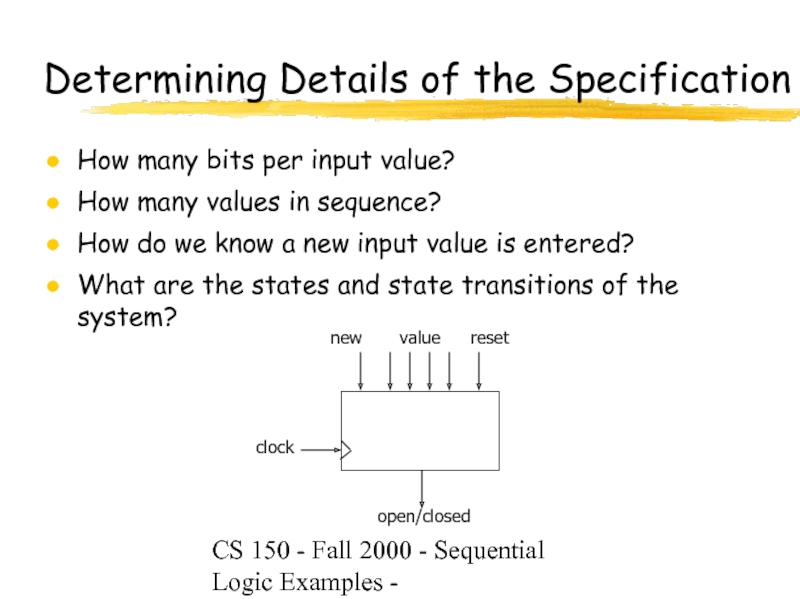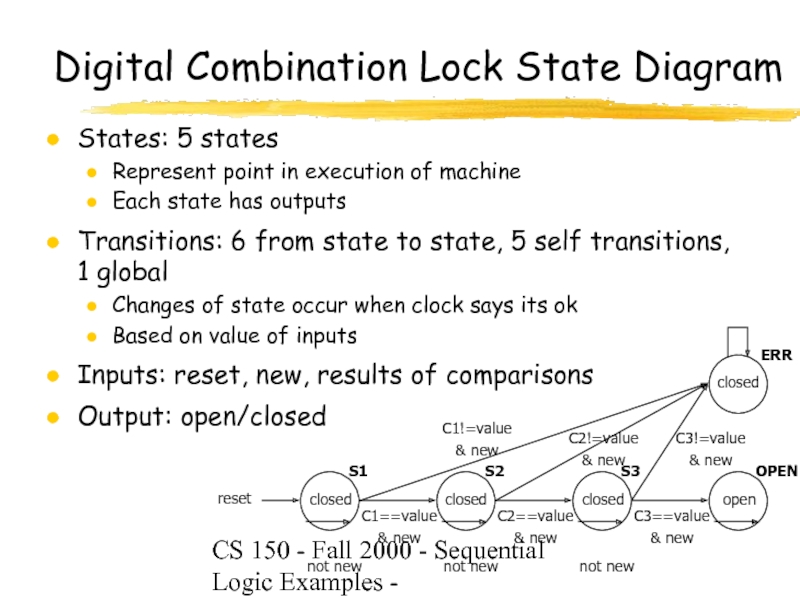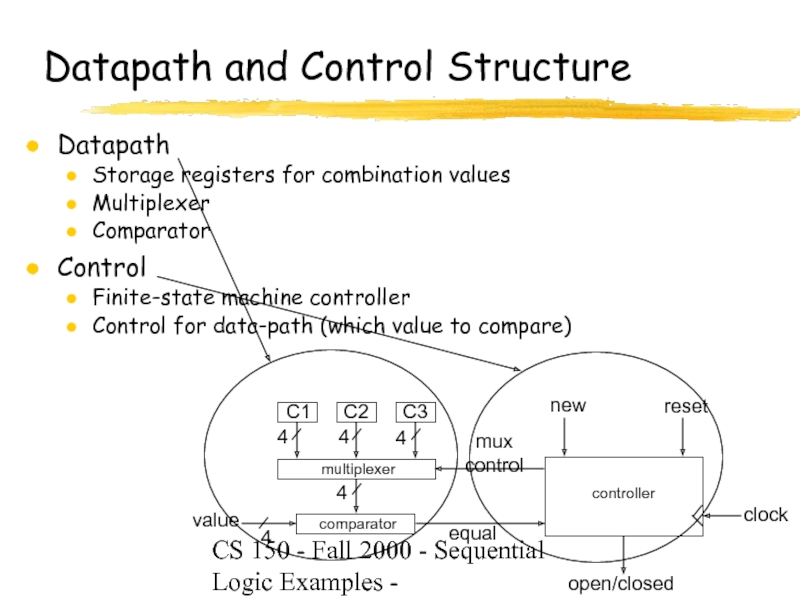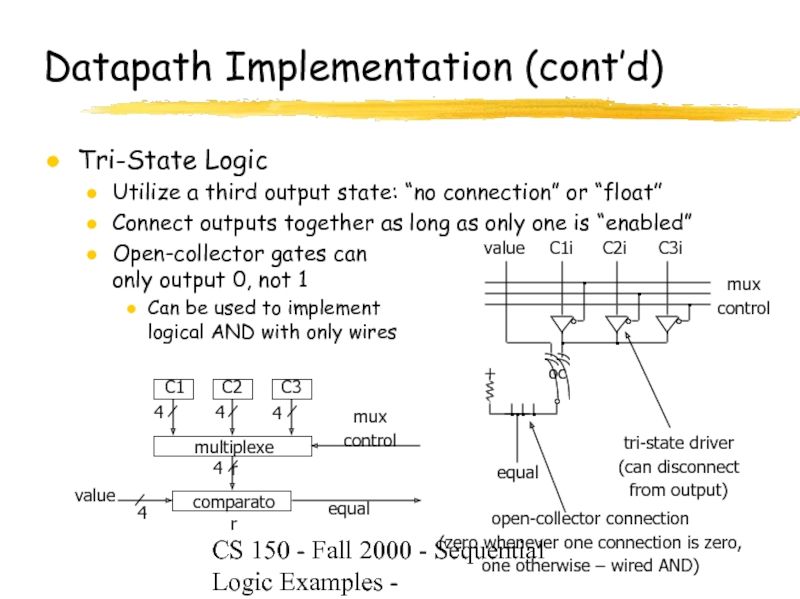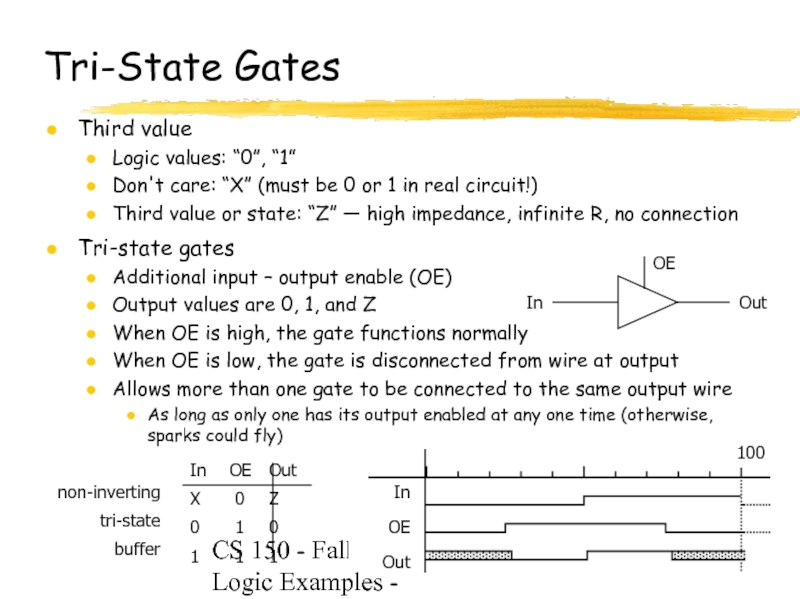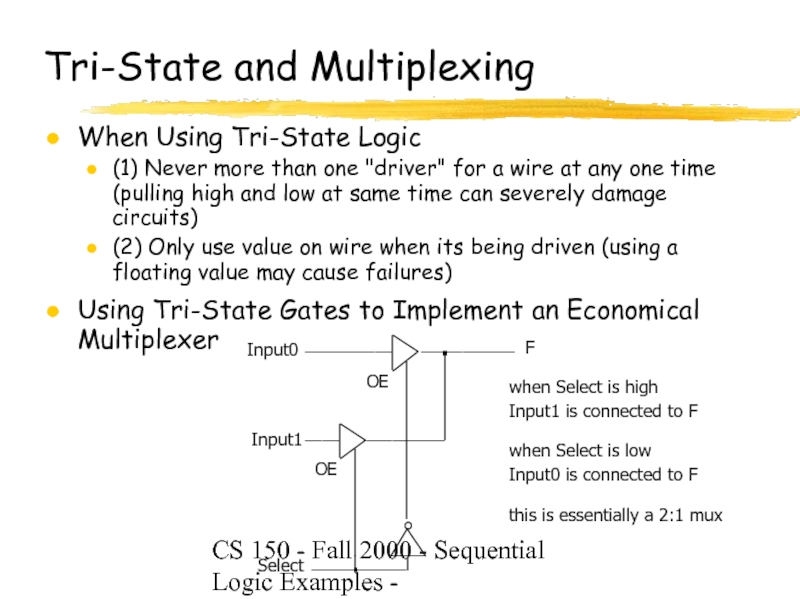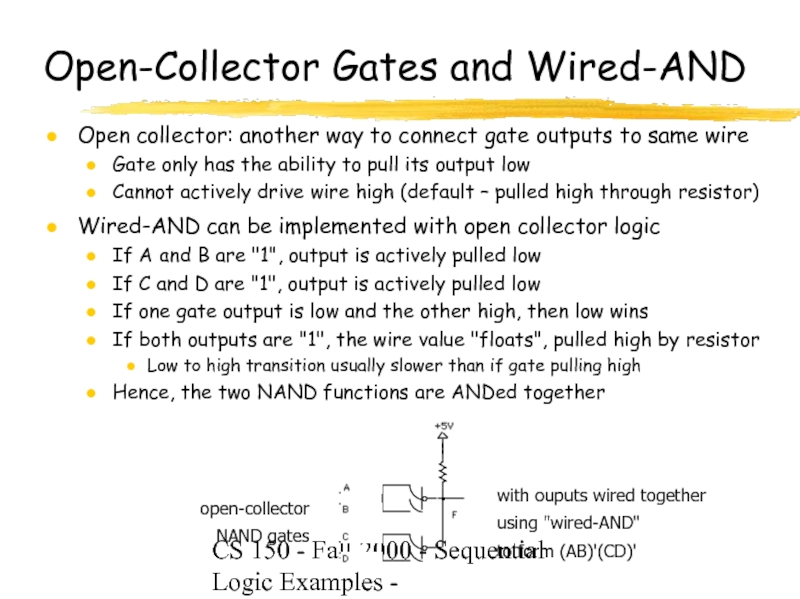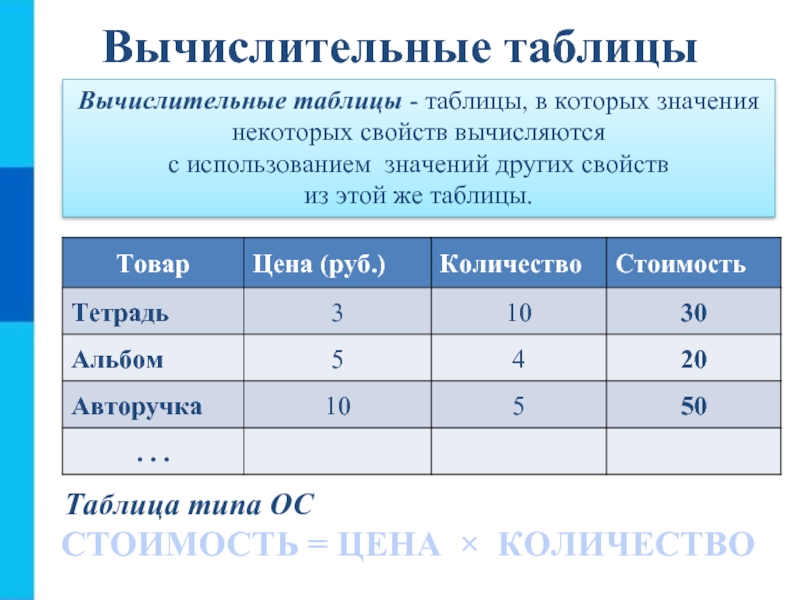string (clk, X, rst, Q0, Q1, Q2, Z);
input clk, X, rst;
output Q0, Q1, Q2, Z;
reg state[0:2];
‘define S0 = [0,0,0]; //reset state
‘define S1 = [0,0,1]; //strings ending in ...0
‘define S2 = [0,1,0]; //strings ending in ...01
‘define S3 = [0,1,1]; //strings ending in ...010
‘define S4 = [1,0,0]; //strings ending in ...1
‘define S5 = [1,0,1]; //strings ending in ...10
‘define S6 = [1,1,0]; //strings ending in ...100
assign Q0 = state[0];
assign Q1 = state[1];
assign Q2 = state[2];
assign Z = (state == ‘S3);
always @(posedge clk) begin
if rst state = ‘S0;
else
case (state)
‘S0: if (X) state = ‘S4 else state = ‘S1;
‘S1: if (X) state = ‘S2 else state = ‘S1;
‘S2: if (X) state = ‘S4 else state = ‘S3;
‘S3: if (X) state = ‘S2 else state = ‘S6;
‘S4: if (X) state = ‘S4 else state = ‘S5;
‘S5: if (X) state = ‘S2 else state = ‘S6;
‘S6: state = ‘S6;
default: begin
$display (“invalid state reached”);
state = 3’bxxx;
endcase
end
endmodule
Finite String Pattern Recognizer (Step 3)
Verilog description including state assignment (or state encoding)
